If you’re not into web design, you may have never heard of CLS or Cumulative Layout Shift in its full name. This issue, which you can encounter while browsing websites, can sometimes be quite annoying. If you own a website, visitors may not want to spend time on it due to this problem, leading to a drop in traffic. So, what is CLS?
The CLS meaning is simply about unexpected and often annoying visual shifts users experience when interacting with a website. This problem can occur when page elements such as images, ads, or other dynamic content load or change size, causing the entire layout to rearrange. Cumulative layout shifts not only frustrates users but can also lead to unintended clicks and decreased engagement.
To deeply understand CLS, you need to know Core Web Vitals, which Google uses to assess website user experience. Cumulative Layout Shift is one of the Google metrics, so deeply understand this problem. Firstly, let’s explain Core Web Vitals.
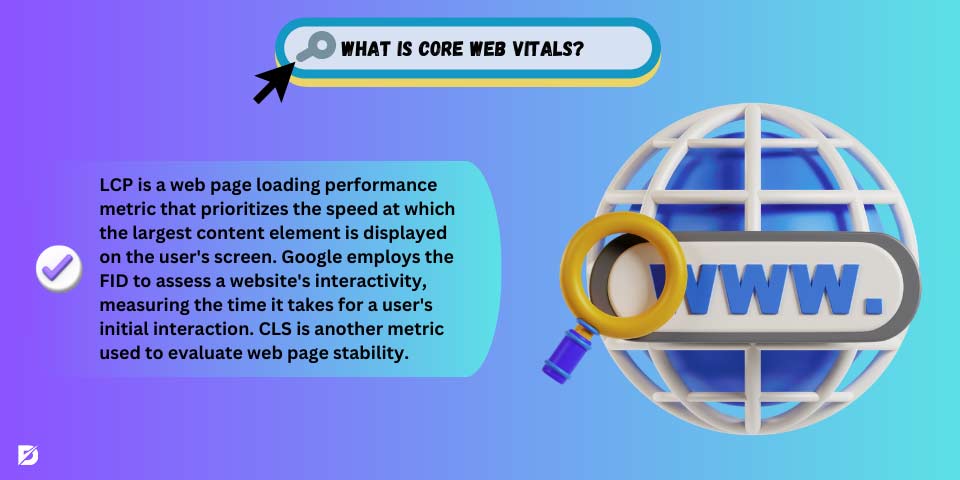
What Is Core Web Vitals?
For a web designer, staying ahead of the game and being well-versed in the latest trends and techniques that can elevate your web projects is crucial. One of the trends that has gained significant attention, especially from search engines like Google, is Core Web Vitals. This is a term that Google gives to represent a set of essential performance test website metrics for the user experience of a website. They have three key metrics:
- Largest Contentful Paint (LCP),
- First Input Delay (FID),
- Cumulative Layout Shift (CLS).
To briefly explain, LCP is a metric that measures the loading performance of a web page. It focuses on how quickly the largest content element appears on the user’s screen, such as an image or text block. A fast LCP ensures that users see meaningful content without delay. To evaluate a website’s interactivity, Google uses FID. It measures the time it takes for a user’s first interaction, such as clicking a button or a link, to receive a response. The final one is the Cumulative Layout Shift (CLS), or we can say that CLS Google or CLS Web vital. Now, let’s deeply look at it.
Why Is CLS Important for Core Web Vitals?
The web design and development realm is always evolving, and understanding Core Web Vitals is crucial as they play a pivotal role in determining a website’s success. Cumulative Layout Shift (CLS) holds a special significance among these key metrics. But why is CLS web vital important? Here are a few reasons:
- CLS directly affects the user experience. When content shifts unexpectedly occur, users get frustrated by them and leave your website.
- Search engines like Google have integrated Core Web Vitals into their algorithms. CLS, along with LCP and FID, influences a website’s ranking in search results. A good CLS score positively impacts your website’s visibility.
- Web users tend to stick around and engage more with websites that provide a seamless experience. If you optimize CLS, you can enhance visual stability and contribute longer user sessions.
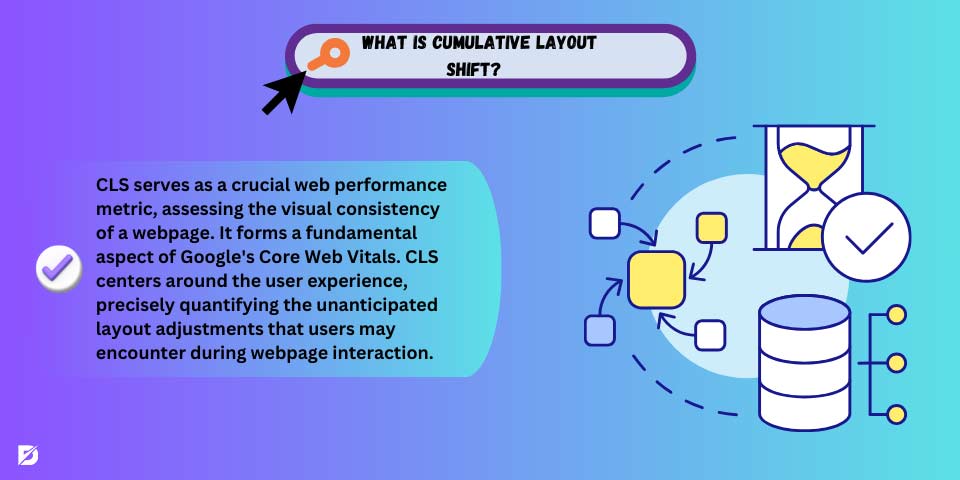
What Is Cumulative Layout Shift?
As we mentioned before, Cumulative Layout Shift or CLS is a vital web performance metric that gauges the visual stability of a web page. It’s a part of Google’s Core Web Vitals. Unlike the other two core vitals, CLS focuses on the user experience by quantifying the unexpected layout shifts that users can have while interacting with a webpage. These shifts can be elements jumping around due to late-loading images or ads.
These shifts can be disruptive to users, leading to accidental clicks or confusion. To assess CLS, a score is calculated based on the impact fraction (how much content moves) and the distance fraction (how far the content moves) during page loading.
Furthermore, we can say that CLS is about improving the user experience. Websites with low CLS scores are more user-friendly, which means users are less likely to be frustrated by content jumping around the page. The term “cumulative” in CLS means the fact that layout shifts can accumulate over a user’s session, gradually eroding the user’s trust and annoying.
Additionally, common causes of Cumulative Layout Shift include images and iframes that don’t have specified dimensions that load after the initial content has been rendered. Ads are often culprits, too.
Why Is Cumulative Layout Shift Important?
Cumulative Layout Shift is important for web designers, developers, and website owners due to its multifaceted impact. It directly influences the overall user experience. When a website exhibits a high CLS, users often have frustration with unexpected shifts. In contrast, a low CLS score ensures a smoother, more enjoyable website visit. Visitors are more likely to engage with the content and stay longer on your site when the layout stays stable and predictable.
Google and other search engines have algorithms with Cumulative Layout Shifts. This means that they consider user experience as a vital aspect of website quality. Therefore, websites with low CLS scores are favored in search rankings. By optimizing CLS, you not only enhance the user experience but also increase the likelihood of your website rankings. This can significantly impact organic traffic.
Additionally, when users have a pleasant experience on your website, they tend to stay longer on your website and spend more time exploring its content. A stable and visually pleasing layout fosters a sense of trust. This increases engagement, reduces bounce rates, and leads to higher conversion rates.
Mobile friendliness is an important issue for web designers since mobile devices are rising. CLS is particularly crucial for mobile optimization. Mobile users are more sensitive to layout shifts, making CLS optimization essential for ensuring your site provides a user-friendly experience on various screen sizes.
Finally, it helps you to have a competitive advantage. Users are more likely to choose sites that offer a seamless and visually stable experience over those plagued by layout shifts. This can result in higher user retention and a broader audience reach.
In summary, Cumulative Layout Shift is not just a technical metric; it’s a pivotal factor in web design services, SEO, and user engagement.
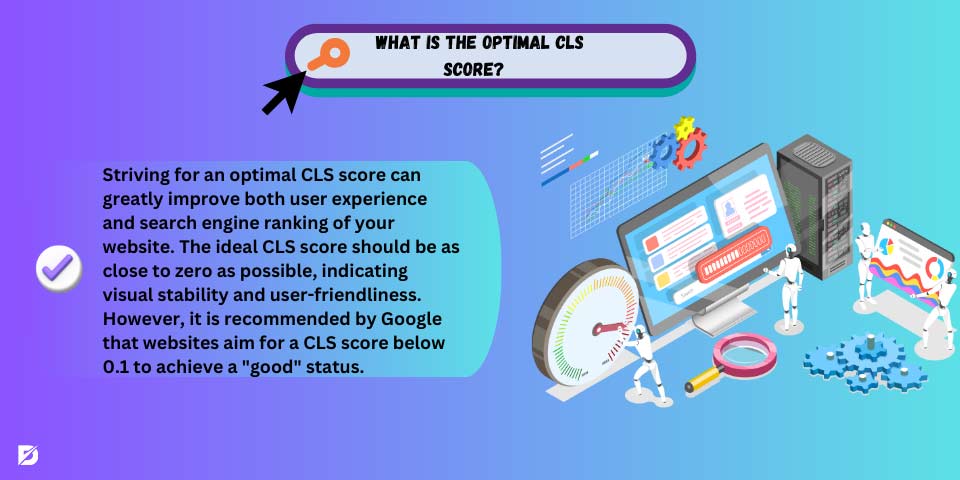
What Is the Optimal CLS Score?
When you have a website, achieving optimal performance is a constant pursuit. When it comes to Cumulative Layout Shift, understanding what constitutes an ideal CLS score is important. Aiming for the right CLS score can significantly enhance your website’s user experience and search engine ranking. The optimal CLS score is, essentially, as close to zero as possible. A lower score signifies a more visually stable and user-friendly website. However, to provide a tangible benchmark, Google recommends that websites strive for a CLS score below 0.1 to be considered “good.”
Understanding the CLS score in this context means realizing that, for every user interaction, whether it’s scrolling down a page or clicking on elements. The website page should ideally remain visually stable. Any visible layout shift, if it occurs, should be subtle and not disruptive.
It’s important to note that achieving a perfect CLS score of zero may not always be realistic, particularly on content-rich websites with multiple dynamic elements. Still, striving to minimize CLS as much as possible is an admirable goal. When you reach or surpass the recommended score of 0.1, your website will likely provide a much-improved user experience. Users won’t be plagued by content that unexpectedly shifts or moves, ensuring a smoother and more engaging interaction with your site.
What Causes a High CLS Score?
Cumulative Layout Shifts (CLS) is a critical web performance metric that directly affects user experience, as previously mentioned. To tackle CLS effectively, it’s essential to understand the common factors that lead to high CLS scores. To prevent high scores, web designers can go with some solutions; however, before these solutions, let’s delve into these common factors to understand it better:
Unoptimized Content
One of the primary factors contributing to the high CLS score is unoptimized content. Unoptimized content particularly means images and iframes. When these elements lack specified dimensions in the HTML, the browser may not allocate space in the layout. As a result, they push other content around when they load, leading to layout shifts.
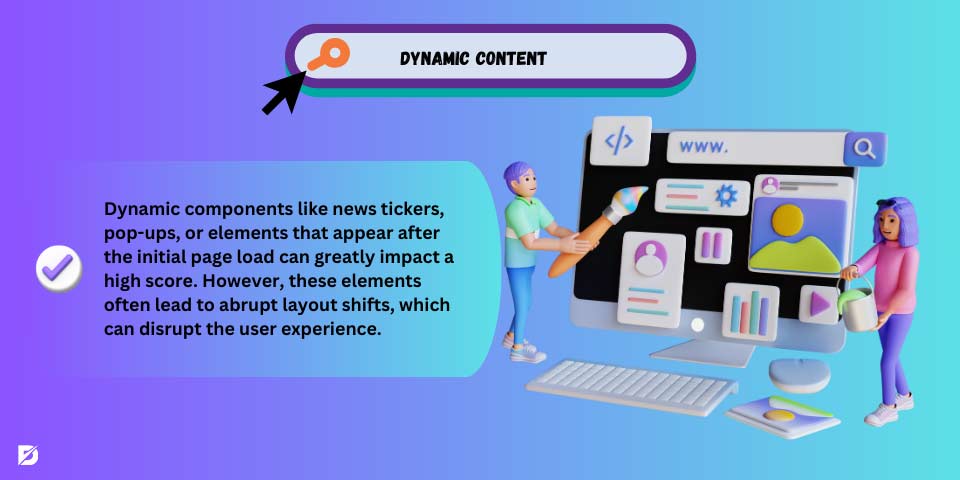
Dynamic Content
Dynamic content, such as news tickers, pop-ups, or elements that appeal after the initial page load, can significantly contribute to a high score. These elements often cause abrupt layout shifts when they materialize, disrupting the user experience.
Ads and Embeds
Advertisements, especially those served by third-party ad networks, can be major culprits for high scores. Ads often load asynchronously, and their sizes may change, causing significant layout shifts. The same applies to embedded media like videos and iframes, which can impact visual stability.
Web-Based Fonts
Web fonts play a crucial role in web design but can also lead to CLS issues. When a webpage relies on web fonts for its typography, it might initially load with default fonts, causing a subsequent shift when the web font files are fetched and applied.
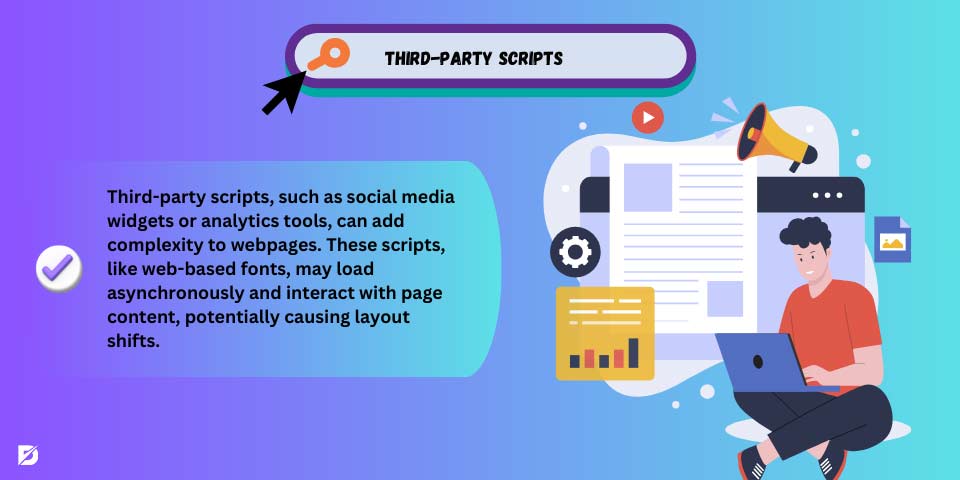
Third-Party Scripts
Social media widgets or analytics tools are some examples of third-party scripts. They can introduce additional complexities to a webpage. The scripts may load asynchronously, just like the web-based fonts, and their actions can trigger layout shifts as they interact with the page’s content.
How to Measure CLS
To improve your website and keep up with the visitors smoothly, you need to monitor and improve its visual stability. Several tools are available for this purpose, which we will explore in this part of our blog post. These tools provide insights into your CLSK score and help you identify areas that need optimization. You can regularly monitor your CLS score on the insights provided by these tools and create a more visually stable and user-friendly website.
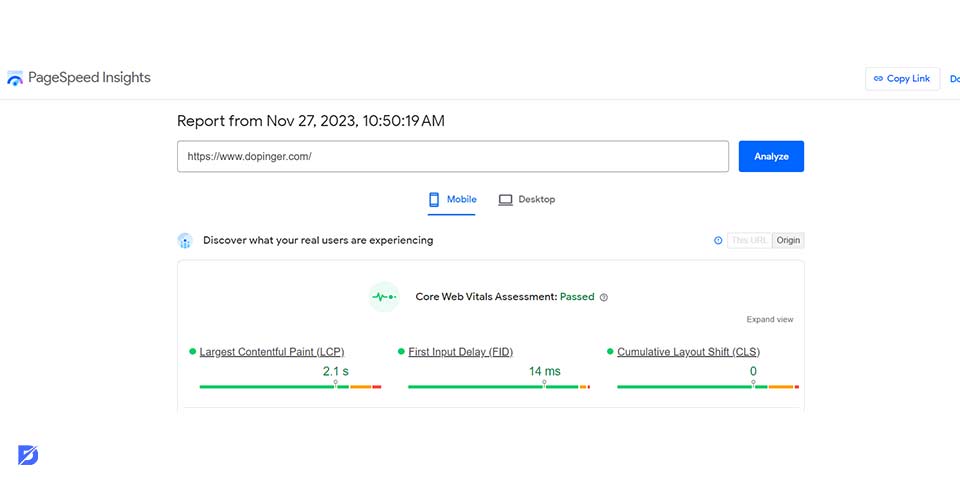
Google PageSpeed Insights
Google PageSpeed Insights is a widely used tool that offers a CLS score as part of its performance analysis. It provides a user-friendly interface where you can input your website’s URL and generate a detailed report that includes CLS data. Google PageSpeed Insights also offers suggestions and optimizations to reduce your CLS score, making it a valuable resource for web developers. This tool for site speed optimization gains importance in improving your website.
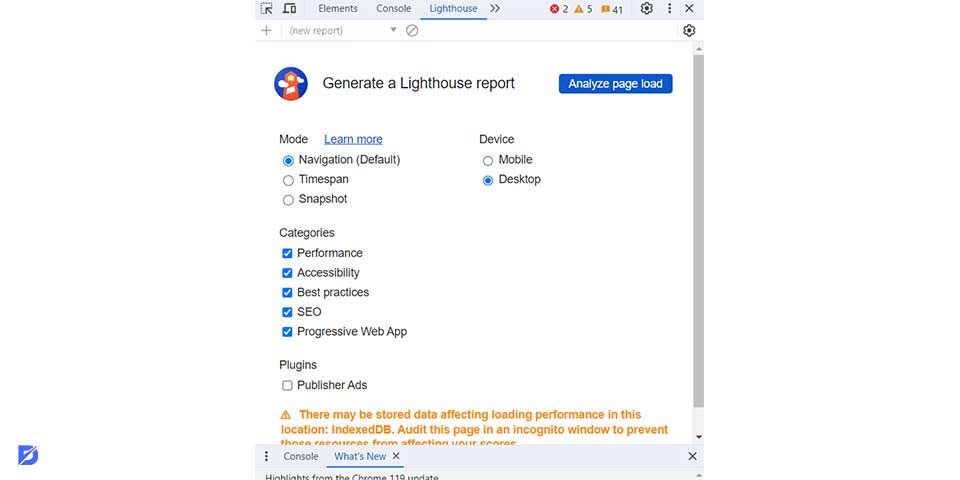
Google Lighthouse
This standalone and open-source tool is integrated into the Google Chrome browser. Lighthouse assesses various aspects of web performance, including CLS. To use it, open your website in Google Chrome, right-click, select “Inspect,” and go to the “Lighthouse” tab. After running an audit, you’ll receive a CLS score and recommendations for improving it. Learn how to use Lighthouse report to optimize your page.
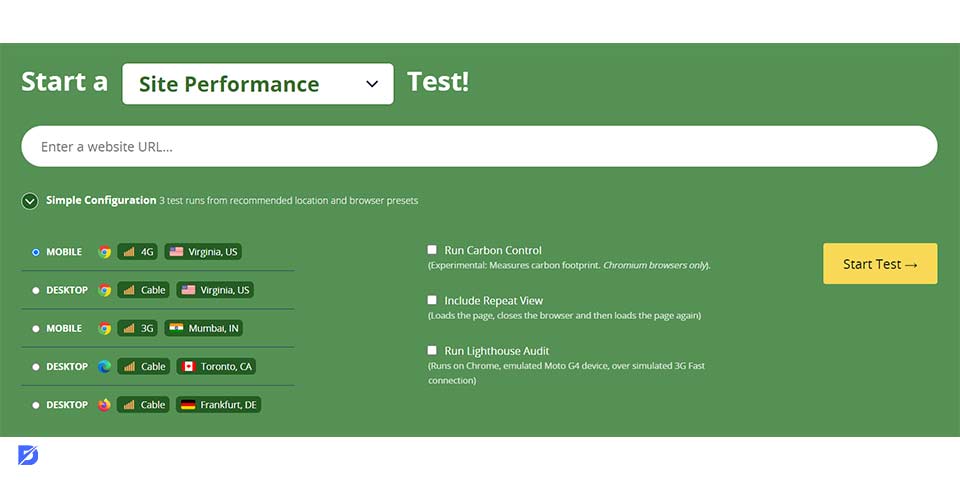
WebPage Test
The webPage Test is another valuable tool for measuring cumulative layout shift. It offers an in-depth performance test website and allows you to select test locations and browsers. When you run a CLS test, WebPage Test provides a waterfall chart and other metrics, including CLS. This tool is particularly useful for comprehensively understanding your website’s performance under different conditions.
How Is CLS Calculated?
Until this stage, we have explored what Cumulative Layout Shift is, its importance, and what causes it. But how is CLS calculated? It is essentially the product of two fractions: Impact Fraction and Distance Fraction. These components work together to provide a numerical value representing the extent of layout shifts experienced by users.
The Impact Fraction measures the proportion of the viewport affected by layout shifts due to elements that change position during page loading. To calculate this fraction for a specific element, you can follow these steps:
- Start by identifying the unstable element. This can be an image, a piece of text, or any content that moves during loading.
- Determine the change in layout. Measure the area the element occupies before and after the shift. The difference in size, often expressed as a percentage of the viewport, represents the impact area.
- Divide the impact area by the viewport size. This yields the Impact Fraction for that specific layout shift event. Repeat this process for all unstable elements contributing to layout shifts during a user’s session.
The Distance Fraction considers how far the elements move during the layout shift. It’s calculated as follows:
- Identify the elements causing the shift and measure the maximum distance they move.
- Divide this distance by the viewport size. This calculation results in the Distance Fraction for that specific layout shift event.
- Once you have these two components for all layout shifts during a user’s sessions, you sum them up to calculate the Cumulative Layout Shift. The formula looks like this:
CLS = Σ(impact fraction * distance fraction) for all layout shift events
In practice, web performance tools do these calculations for you. They simulate user interactions and measure layout shifts, providing you with a CLS score, which is a single, easy-to-understand number representing the overall visual stability of your web page.
How to Resolve a CLS Issue?
You know how to calculate these issues, but addressing the Cumulative Layout Shift issues is crucial for creating a visually stable and user-friendly website. Resolving CLS problems involves a combination of best practices and specific techniques to ensure a smooth user experience. Let’s check them:
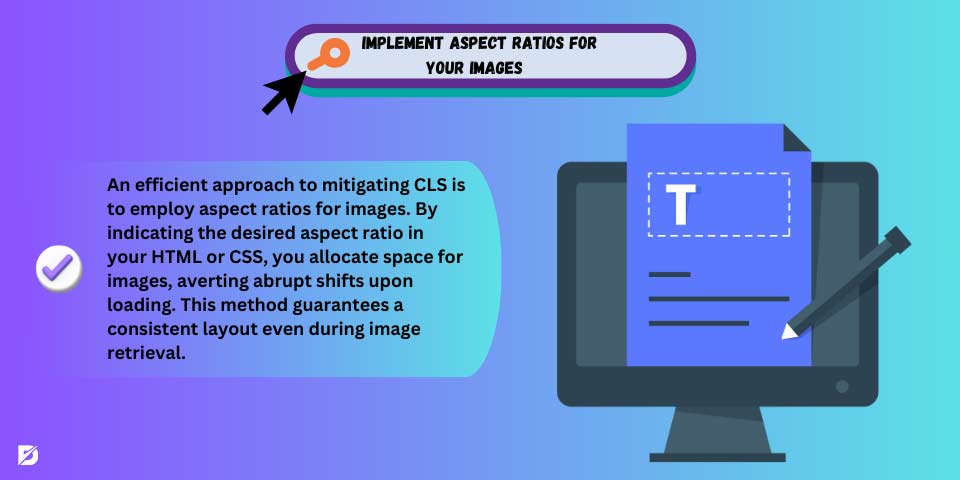
Implement Aspect Ratios for Your Images
One effective way to reduce CLS is to implement aspect ratios for your images. By specifying the aspect ratio in your HTML or CSS, you reserve space for images, preventing sudden shifts when they load. This technique ensures the layout doesn’t change dramatically, even as images are fetched.
Optimize Images and Videos
This is another way to minimize Cumulative Layout Shifts. Ensure images and videos are appropriately sized and compressed for the web. You can use modern image formats like WebP and lazy loading techniques to prioritize content loading before images. This reduces the risk of layout shifts caused by media elements.
Prioritize Above-the-Fold Content
Prioritizing above-the-fold content can significantly enhance user experience. Load essential content first and ensure users can begin to interact with your site without delays. Doing this minimizes the chances of layout shifts occurring when late-loading content, such as images, finally renders.
Reserve Space for Ad Slots
If your website incorporates advertising, reserving space for ad slots is crucial. By specifying ad dimensions in your code, you prevent unpredictable layout shifts when ads load. Coordinate with ad networks to ensure their content doesn’t disrupt your page’s visual stability.
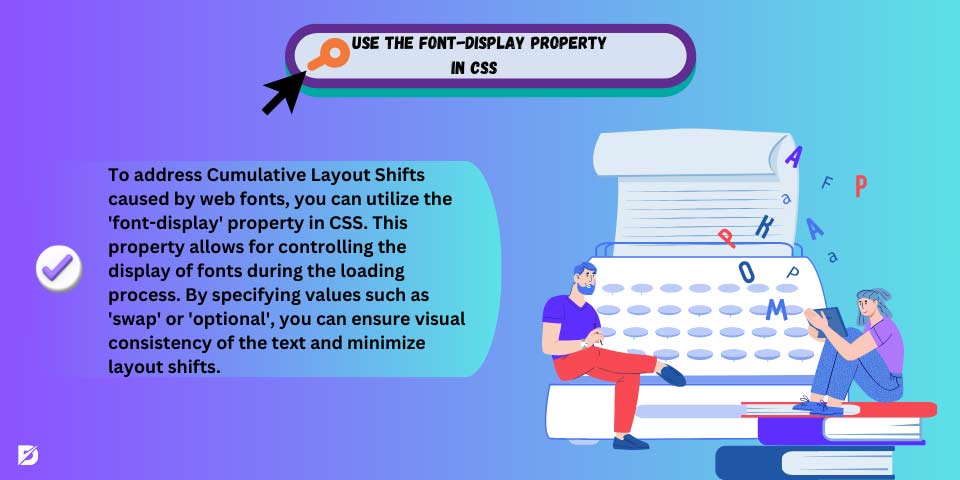
Use the Font-Display Property in CSS
To mitigate Cumulative Layout Shifts related to web fonts, leverage CSS’s ‘font-display’ property. This property lets you control how fonts are displayed during loading. By specifying a ‘swap’ or ‘optional’ value, you can maintain the text’s visual consistency, reducing layout shifts.
Track and Analyze Your CLS Score Frequently
Regular monitoring of your CLS score is essential, of course. Utilize tools like GoogleSpeed Insights, Google Lighthouse, or WebPage Test to frequently assess your website’s performance. These tools provide insights into Cumulative Layout Shift issues, helping you identify and address problems as they arise.
The Connection Between CLS and SEO
SEO (Search Engine Optimization) is a fundamental digital marketing strategy that enhances a website’s visibility and rankings on search engines like Google. It is a multifaceted approach that optimizes various elements of a website to make it more search engine-friendly and, of course, user-friendly. Simply, it is the practice of tailoring a website’s content, structure, and performance to meet the requirements of search engine algorithms, ultimately increasing organic traffic and improving the website’s online presence. First, let’s explore how search engines (especially Google) view CLS to understand the connection between CLS and SEO. Then, it will look at the impact of CLS on search engines, and finally, it will discuss how to analyze CLS issues using Google Search Console.
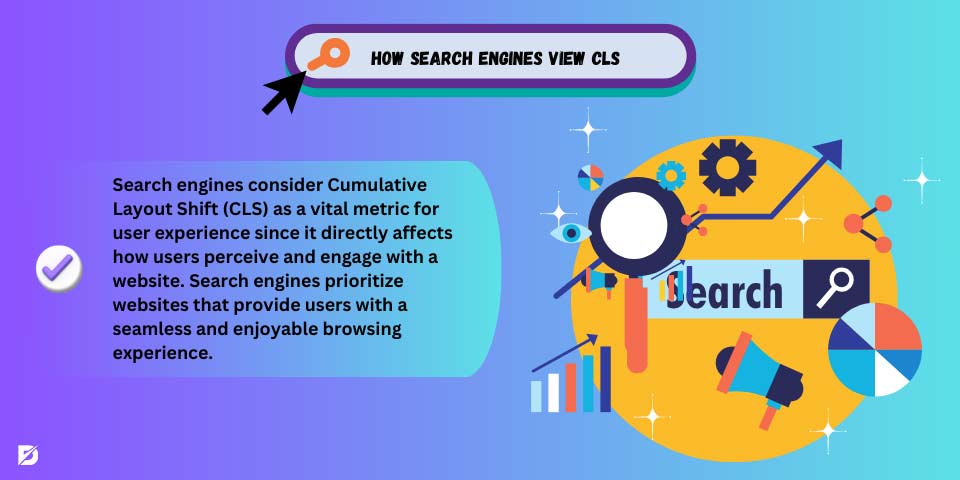
How Search Engines View CLS
Search engines, including Google, are increasingly focused on providing users with a superior web experience. Cumulative Layout Shift is a key part of this effort. Search engines view CLS as a crucial user experience metric because it directly impacts how users perceive and interact with a website.
When users encounter excessive layout shifts on a webpage, it can lead to frustration, accidental clicks, and a poor overall user experience. Search engines aim to prioritize websites that offer users a smoother, more enjoyable interaction. To achieve this, they factor in CLS, alongside other Core Web Vitals, when determining search rankings.
The Impact of CLS on Search Rankings
CLS directly affects how websites are ranked in search engine results pages (SERPs). Websites with poor CLS scores are more likely to rank lower in search results. Conversely, those with good CLS scores have a competitive advantage.
To maintain or improve your website’s search rankings, optimizing for Cumulative Layout Shifts is imperative. Minimizing layout shifts and ensuring a visually stable user experience will enhance your site’s SEO and attract more organic traffic.
How to Analyze CLS Issues in Google Search Console
Google Search Console offers valuable insights into CLS issues on your website. You can use it to analyze Cumulative Layout Shifts. To do this, follow these steps:
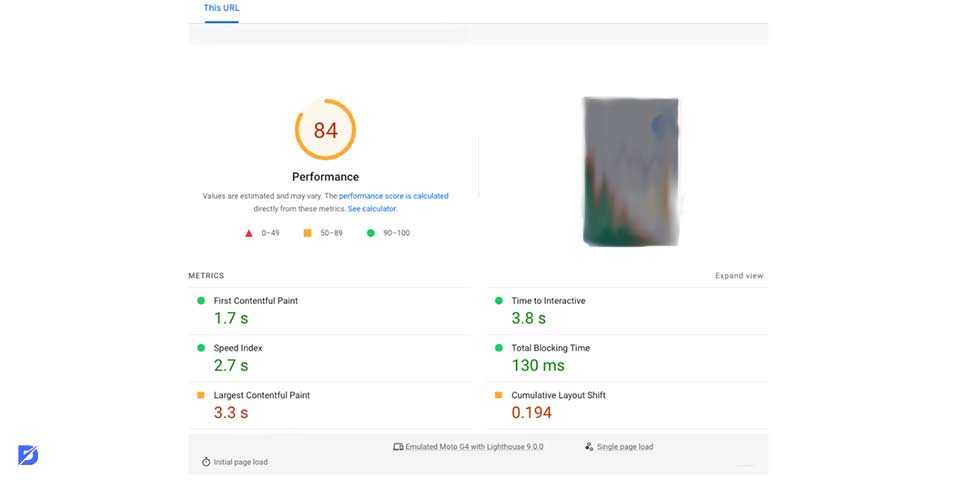
- First, sign in to Google Search Console and select your property (website).
- Click on “Core Web Vitals” under the “Enhancements” section. Here, you’ll find an overview of your website’s Core Web Vitals performance, including CLS.
- Review the CLS data for specific pages and identify URLs with poor CLS scores.
- Click on individual URLs on those pages to access more detailed information about CLS issues.
- Use the provided data and recommendations to address and optimize Cumulative Layout Shifts on your website.
By regularly monitoring Cumulative Layout Shift issues in Google Search Console and taking action on the insights provided, you can work toward improving your website’s visual stability and, consequently, its search rankings.
In Conclusion Cumulative Layout Shifts
Cumulative Layout Shift (CLS) is a critical aspect of web design and SEO, which impacts user experience and search engine rankings. Web designers and developers can create more user-friendly websites and improve rankings by understanding Cumulative Layout Shifts, optimizing Core Web Vitals, and taking proactive measures to reduce layout shifts. Monitoring CLS through tools like Google Search Console ensures ongoing success, making it an integral part of effective web management.
Frequently Asked Questions About
High CLS can lead to a poor user experience as it results in unexpected layout changes, potentially causing frustration, accidental clicks, and a higher bounce rate.
The optimal score is as close to zero as possible, but Google recommends striving for a CLS score below 0.1 to be considered “good.”
These can be unoptimized content (images, iframes), dynamic content, ads and embeds, web-based fonts, and third-party scripts that load asynchronously.
It is calculated by summing the product of the Impact Fraction (how much content moves) and the Distance Fraction (how far the content moves) for all layout shift events.
Optimize your website’s images, ads, and dynamic content to improve CLS, and monitor your CLS scores regularly. Prioritize a visually stable layout to provide a better user experience and boost your SEO efforts.



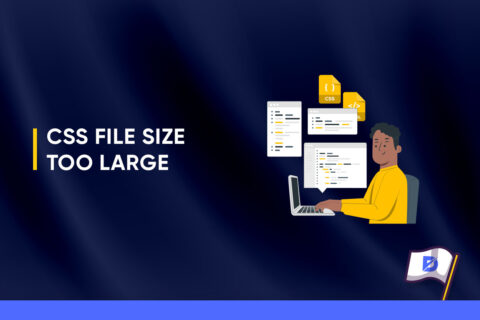

No comments to show.